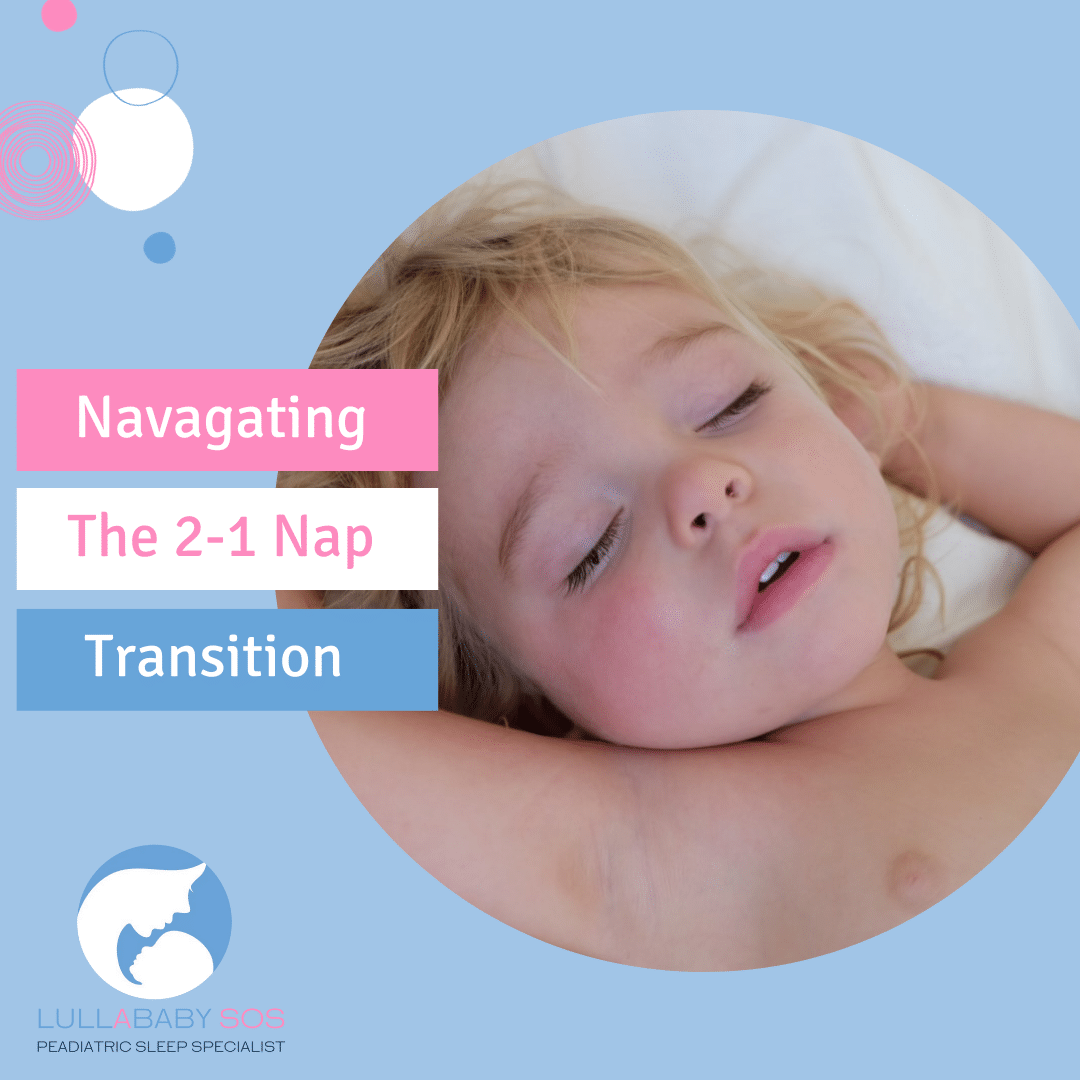Navigating the Transition to One Nap: A Holistic Approach to support the transition for both you and bub.
Wondering when to make the shift from two daytime naps to one? Let’s dive into this common concern, but remember, if it’s working well, there’s no need to fix it! If your little one is thriving with two naps, nighttime settling, and sleeping through, stick with it.
The Right Timing:
Typically, the average age to drop to one nap is around 15-18 months. However, the term “average” varies, and your child may be ready anywhere from 12 to 22 months.
Signs that your baby is ready for the transition:
Keep an eye out for signs like Early Rising – Gradually waking earlier and earlier and being unable to get back to sleep.
Difficulty Falling Asleep And Staying Asleep for naps- Taking longer and longer to go to sleep, fighting naps, cat napping when they used to sleep longer, or only falling asleep at the time when they should be waking up from their second nap.
Resisting/ delayed bedtimes – Taking too long 1/2 hour or more to fall asleep at night and or prolonged/ delayed bedtime routines.
Split Nights: Waking overnight and staying awake for an hour or more.
Early Transition:
Although most babies drop naps at around 15 months some babies may transition sooner, and few have even transitioned to one nap before 12 months, in my experience this is often due to lower sleep needs or a history of disrupted sleep. Babies who don’t have a good sleep routine tend to struggle with sleep as a general rule and are more likely to fight sleep and naps resulting in dropping naps sooner rather than later.
If you notice 2 or more of these signs consistently for a few weeks, it might be time to consider the shift to one nap.
Signs Your Baby Is Ready:
– Early rising
– Difficulty settling for naps
– Falling asleep when they should be waking up
– Prolonged bedtime routine
– Waking earlier in the morning
Ideal Nap Time:
Once the transition is imminent, aim for a nap between 11 am and 1 pm. This ensures they sleep during the middle of their day, not necessarily at midday. As your little one will be sleeping through ‘lunchtime’, I generally recommend that you offer a lunch or large morning tea and maybe a milk feed before their nap and another large meal after their nap so they are fully satiated during their nap. Consider dropping snacks and offering 4 meals for a few months (Breakfast/ 1st Lunch before nap 2nd Lunch after nap and Dinner)
Adjustment Period:
The transition to one nap might take a few weeks, during which your little one may feel a bit overtired. To ease this, start the bedtime routine 30 minutes earlier. Be open to the possibility of a catch-up day with two naps or a short afternoon catnap 1-2 days a weeks for the first few weeks, the shorter nap can be an assisted car or pram nap if they are likely to fight the nap in their crib.
Supporting Your Little One:
During the adjustment period, be attentive to signs of tiredness in the late afternoon. A calm playtime, reading, or a stroll in the pram around 4 pm can help them wind down and adapt to the new routine. Think of this time as our chill time in the evening, watching tv and winding down before going to bed. Providing a low-stimulation activity/ period in the late afternoon will help them in the lead-up to bedtime.
Remember, every child is unique, and there’s no one-size-fits-all approach. Trust your instincts and observe your child’s cues to ensure a smooth transition.
Need support? Book a consultation or an introductory call to see how we can work together to make tis transition a smooth one for the whole family
Sleep well, mama! 🌙💤



